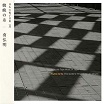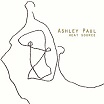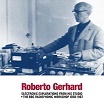akos rozmann-12 stations/tolv stationer 7cd (ideologic organ)
Price: $71.99
Sale Price: $71.99
Retail Price: $.00 (Save $-71.99)
akos rozmann: 12 stations/tolv stationer
In 2012 Ideologic Organ released the 2LP set 12 Stationer VI featuring the last part of a large scale work by the Hungarian-Swedish composer Ákos Rózmann. Here, in 2014 Ideologic Organ is immensely proud to present the complete version of Rózmann 's epic masterpiece presented for the first time in its entirety as a deluxe 7CD set. Akos Rózmann (1939-2005) was born in Budapest where he studied organ and composition at the Liszt Academy. From 1971 to 1974 he studied composition at the Royal College of Music in Stockholm and from 1978 he was an organist at the catholic cathedral in Stockholm. Throughout his life, Rózmann dedicated himself to musique concrete, developing one of the largest and most rewarding bodies of work in this, the most alchemical of all musical genres. In the early '80s, Rozmann started to build a private electroacoustic studio which he installed in the basement of the Catholic Cathedral while continuing to work in tandem at the Elektronmusikstudion (EMS Sweden) where he produced his earlier masterpieces. With an unwavering commitment to the creation of music, Rózmann would often lock himself up in his windowless studio working into the night in order to achieve the results he desired. This combination of vision, passion and stubbornness resulted in one of the most singular catalogs within the field of musique concrète, commissioned by the Hungarian composer Miklos Maros, who requested a five-minute work for piano and voice. Rózmann accepted the offer with the intention of writing a tape piece made from recordings of Miklos' wife, the soprano singer Ilona Maros' and his own experiments with prepared piano. The elements recorded here became the source material for Twelve Stations, a work which flew far from the initial five-minute brief to land 20 years later as a spirit-stretching journey of more than 6 1/2 hours. The compositional process is unique in Rózmann's output due to the 18-year gap between the initial phase and completion of the final work. The first phase made between 1978-1980 consists of an exploration of traditional musique concrète techniques such as speeding up, slowing down, cutting and splicing tape. The last four stations made between 1998-2001 embrace digital technology where small sections of the original recordings from 1978 were fed through an effects processor and improvised on a sampler keyboard. Despite this gap and the different techniques deployed at each period of creation the monumental result sits as a complete and staggering whole. Within the set limitations of the source material Rózmann's skill unfolds in an uncanny ability to coax a vast world of flexible sound from the original piano and voice recordings. The result is a maelstrom of dynamic audio and one of the most daring, challenging and rewarding works of musique concrète from the 20th century. Rózmann was typically ambiguous about the meaning behind his work despite suggesting earlier that the first part of Twelve Stations was an interpretation of the Tibetan Wheel of Life. Twelve Stations is a unique masterpiece of 20th century musique concrète and presents itself as an intensely personal and bold realm of sound, an offering as such, a radical mass open to all." --Mark Harwood; Packaged in a hardcover slipcase with a pull ribbon, a 20-page booklet containing an extensive essay on the composition by the scholar Gergely Loch, photos from the process and of scores and the composer.
You might also be interested in...





